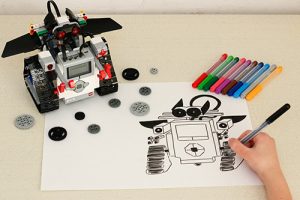 I have been preparing to teach the summer AIM Program course on creating business solutions and have been thinking about the seeds of innovation. Where exactly do these seeds come from and what helps them to germinate? What forces stifle them, preventing them from growing and maturing? We will explore all of these points in the course and this post reveals some of my thoughts on the early stages of the innovation process.
I have been preparing to teach the summer AIM Program course on creating business solutions and have been thinking about the seeds of innovation. Where exactly do these seeds come from and what helps them to germinate? What forces stifle them, preventing them from growing and maturing? We will explore all of these points in the course and this post reveals some of my thoughts on the early stages of the innovation process.
Nature vs. Nurture
Ideas can come from many places but I have found they sprout from well-cultivated soil. Nineteenth century chemist Louis Pasteur said, “chance favors only the prepared mind.” Innovation may seem to spring up in unexpected ways and in unique places but it comes as a result of preparation, observation, and hard work. It comes from days, months, or even years of thinking, pondering, and studying a problem.
Are innovators born or made? A 1973 study of fraternal and identical twins showed that while there is some genetic predisposition toward creativity, most of it is learned. That is good news for people who don’t think they are natural innovators.
Creative Ecosystem
How does an organization foster creativity and innovation? How do they build an ecosystem that allows and encourages everyone to think beyond the immediate issues? Companies such as 3M and Google allow employees time to explore ideas outside the scope of their job. But it takes more than time to foster creativity, it takes an atmosphere or ecosystem that encourages experimentation and allows failures. Thomas Edison is purported to have said, “I have not failed, I’ve just found 10,000 ways that won’t work.” It is not easy for an organization to allow time and effort for “ways that won’t work” but this is part of the preparation necessary for that big breakthrough idea.
Barriers to Creativity
We often place barriers to innovation and creativity. These may come in the form of hardened ideas about “how we do things around here” or inflexible rules and regulations. Examples of companies fighting barriers are Tesla and Uber. In March 2014, New Jersey, among other states, banned direct sales of Tesla automobiles in the state because they did not comply with the decades old “dealership” model. Tesla traditionally sells cars directly through small storefronts and not through the conventional dealer and service center model. New Jersey reversed that ban a year later. Uber faces similar barriers. Traditionally, taxi companies are highly regulated and limited by municipalities. Drivers work for a taxi company that pays franchise fees to the city. Uber drivers are not full-time employees, they are only contractors, so the whole regulation and fee structure begins to fall apart. Several cities initially banned Uber from operating in their area because its business model did not conform to the traditional standard. Tradition can often be the greatest enemy of innovation.
Thoughts
To those who will join me in the business solutions course this summer, I look forward to an exchange of ideas on ways to promote and stimulate innovation for individuals and organizations. With proper preparation and dismantling of barriers, creativity can flourish and can lead to invention and new revenue sources. Let me know your thoughts.
Kelly Brown is an IT professional and assistant professor of practice for the UO Applied Information Management Master’s Degree Program. He writes about IT and business topics that keep him up at night.




